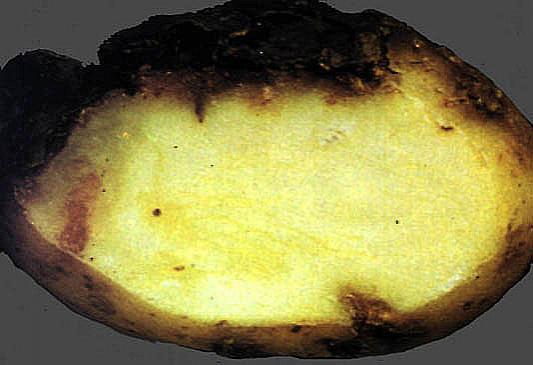Kvalitetssäkring
Provning och kvalitetsarbete SMAK´s system för att klassificera potatis och analysera kvalitén...
Ditylenchus destructor
Tidiga angrepp under växtperioden är svåra att upptäcka, de framträder endast som små ljusa fläckar strax under skalet, där nematoderna trängt igenom. Vid tiden för upptagning kan korkskalet ha brustit sönder och missfärgats, något påminnande om vanlig skorv. Lukten påminner om honung. Allteftersom djuren tränger längre in i knölen uppstår, i de tidigare angreppen, små håligheter, vilka mörkfärgas av sekundära rötor.
Nematoderna rör sig vanligen ytligt i knölen. Skadan orsakas av nematoden Ditylenchus destructor. Angreppen blir ofta svårast vid uppodlingen av jord, som fått växa igen med ogräs, på vilka nematoden kan utvecklas. Till värdväxterna hör en rad av våra vanligaste ogräs, såsom maskros, fettistel, hästhov m fl.

Potato tubberrot eelworm
Attacks in the early stages of growth are difficult to discover, as they appear only as small, light blotches immediately under the skin where the nematodes enter. At the time of harvesting the cork layer can have been ruptured and become discoloured, somewhat reminiscent of common scab. The smell is not unlike that of honey.
As the worms progress deeper into the tuber small cavities appear in the original points of attack and are discoloured by secondary infections. The nematodes usually have their habitat in the surface of the tuber. The damage is caused by the Ditylenchus destructor nematode. Attack is usually severest in crops grown in ground that has been overgrown by weeds, on which nematodes can develop. host plants are to be found among some of the more common types of weeds, e.g. dandelions, corn sow-thistle and coltsfoot.